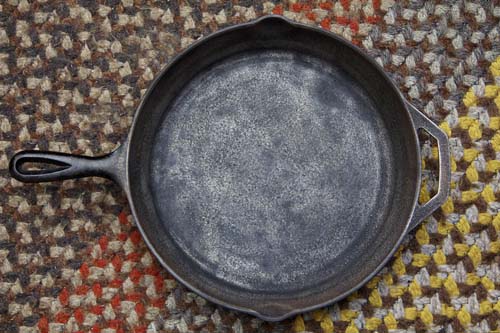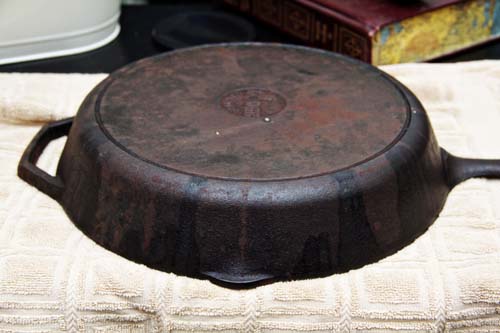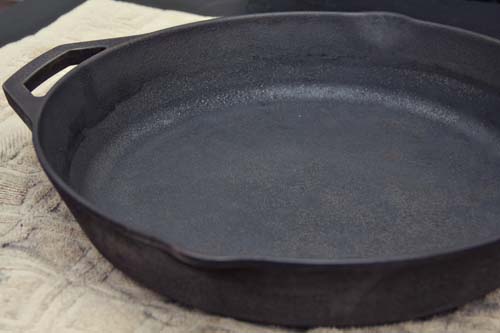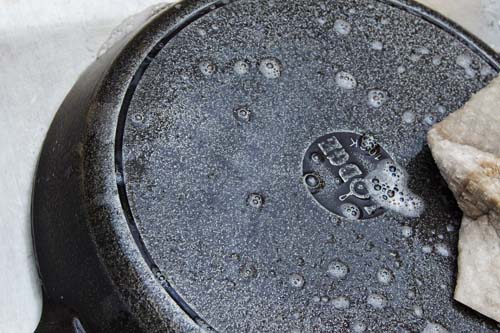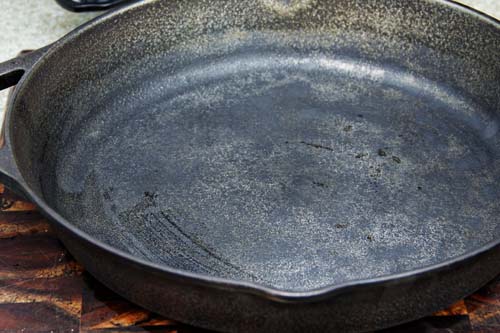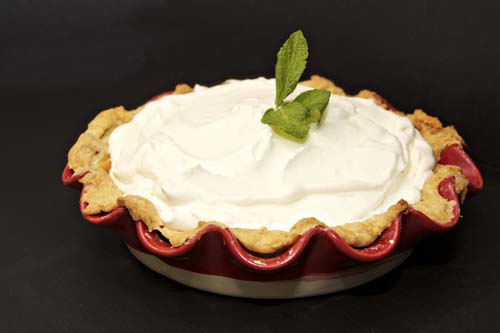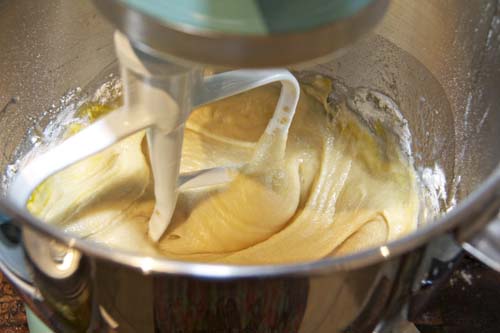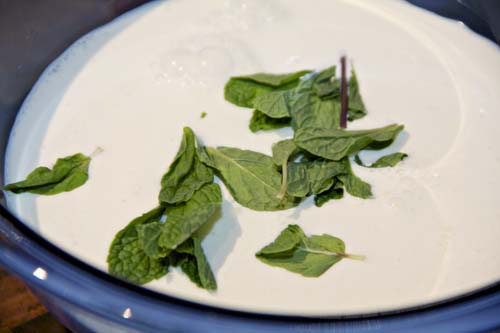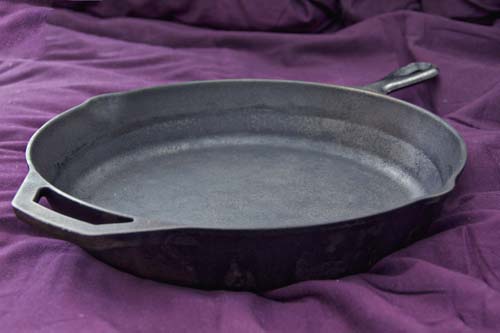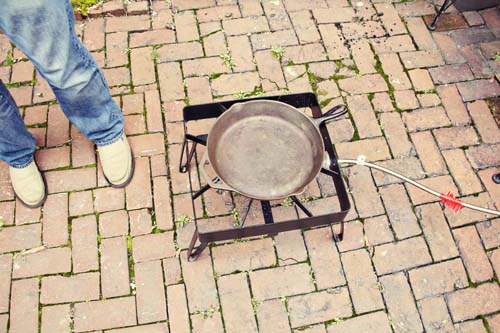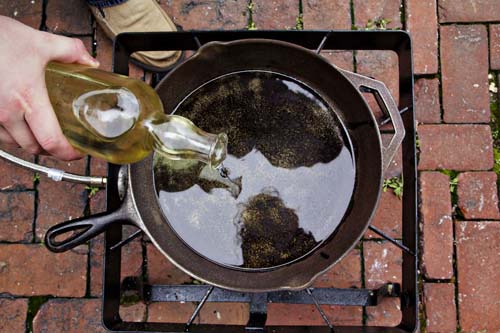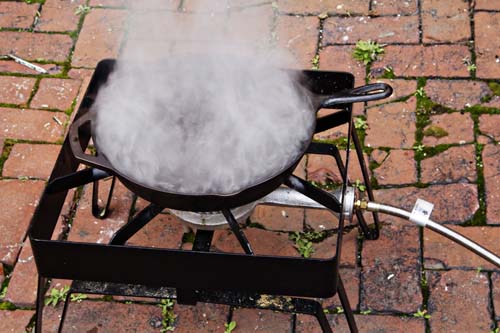The Cast Iron Chronicles: Part 5
Okay, so after our last super exciting installment I’m back with another boring me-sanding-in-my-living-room-watching-Criminal Minds post. After setting the pan on fire (on purpose), I had two things left to accomplish- I needed to make sure the last of the rust/carbon residue was scrubbed out, and I needed to clean the rust off the bottom of the pan (an area I’d mostly been ignoring). So I sat down with my sanding paper (coarse first, then fine) and set to work.
After about an hour of admiring Dr. Spencer Reed’s new haircut (circa Season 4), the pan was looking pretty incredible. By this point all of the visible rust was gone and it looked like a raw but useable piece of cast iron equipment. It took me a few minutes to accept it, seeing as how I’ve been cracking at this beast for weeks I didn’t think I’d ever get to the point where I’d be ready to fry an egg in it.
And fry an egg I will, after a few additional steps. I rinsed out what had been sanded off and took to the pan with very hot water and a lot of soap. I know I always preach that soap and your cast iron are mortal enemies, and that is VERY TRUE, with one exception. Right before you reseason a pan a gentle soap can be a great help in ensuring that your pan is ready to use with food. I took a good long crack at the pan in the sink, scrubbing it until the cloth wiped clean. The next step is to season it gently, which will be our next (and final) installment. And then the bacon, naturally.
Part 1 / Part 2 / Part 3 / Part 4
p.s., It’s weird that I didn’t get a lecture from anyone about using the wrong amount of oil in the last post. I get nasty emails about so much less (coughgrammarcough). You guys have gotten soft.
p.p.s. That wasn’t an invitation to send me a lecture, thankskbye.


